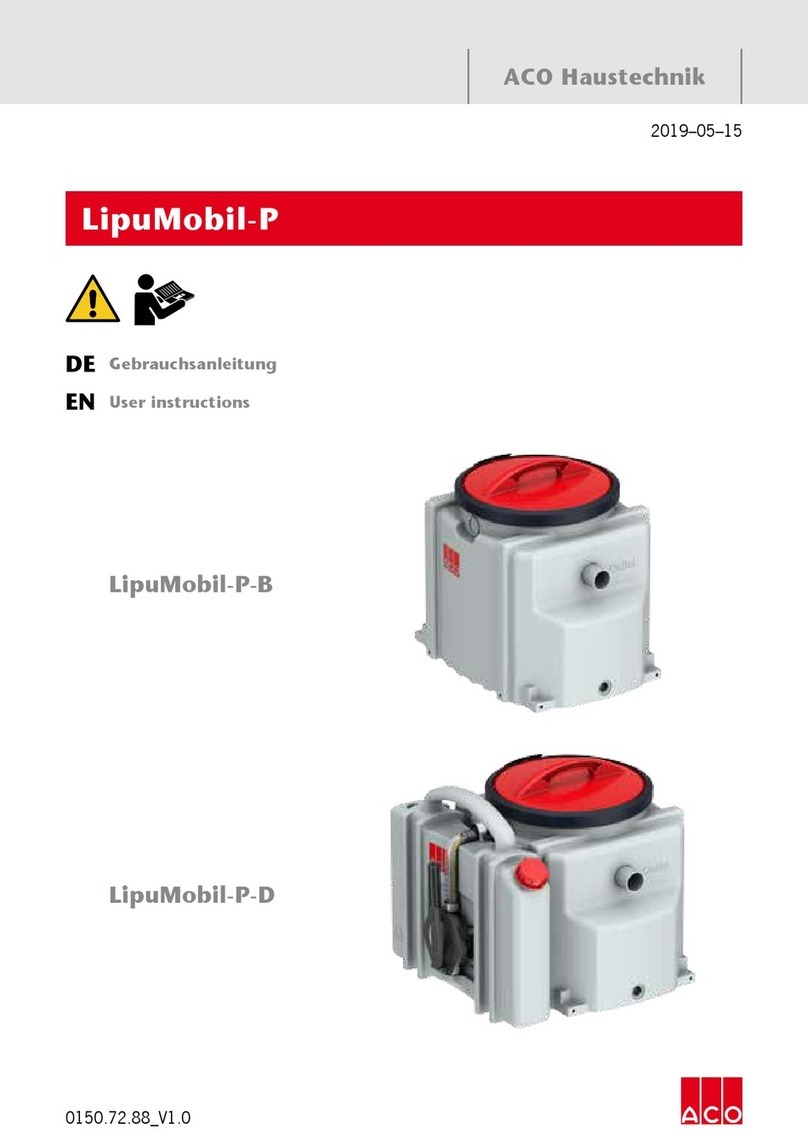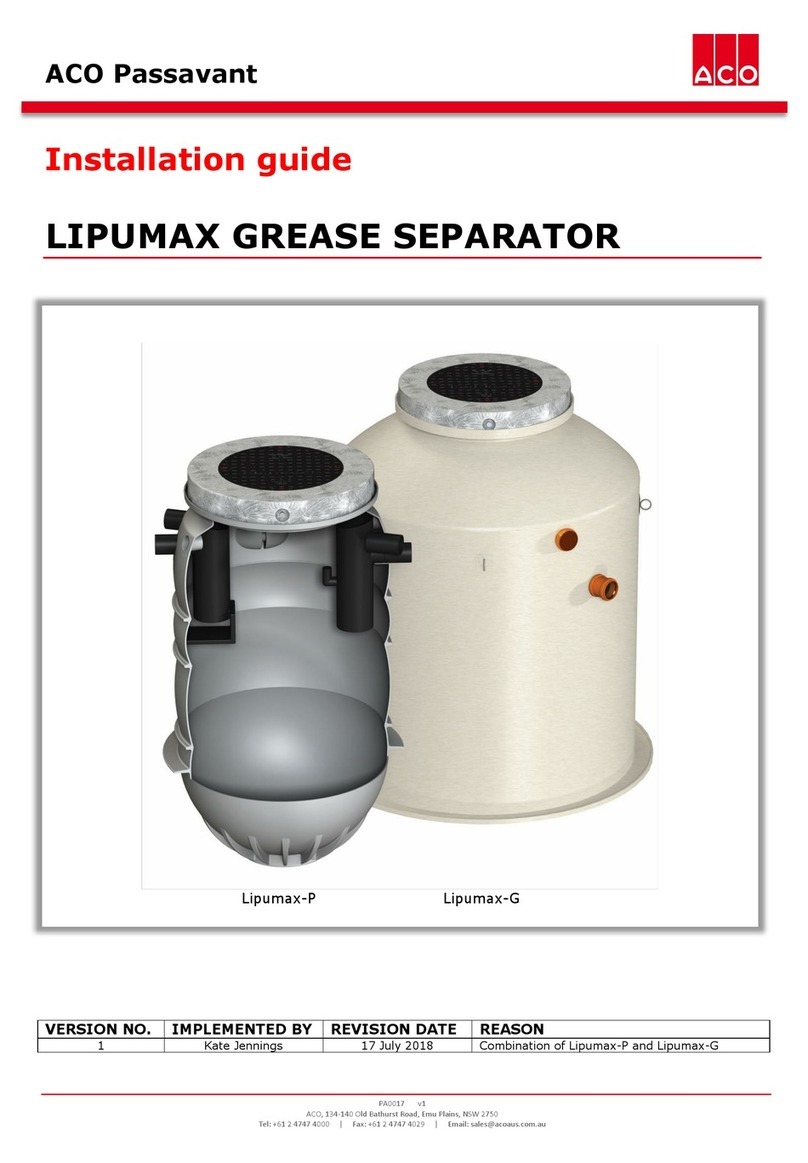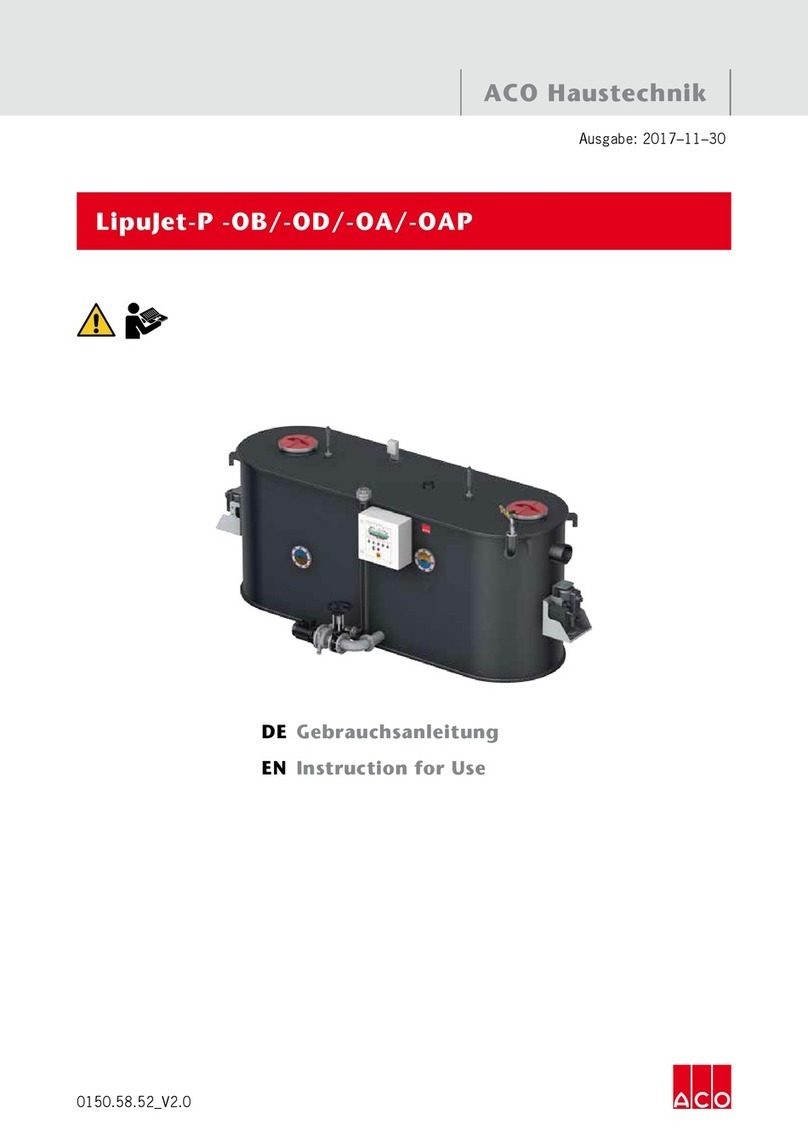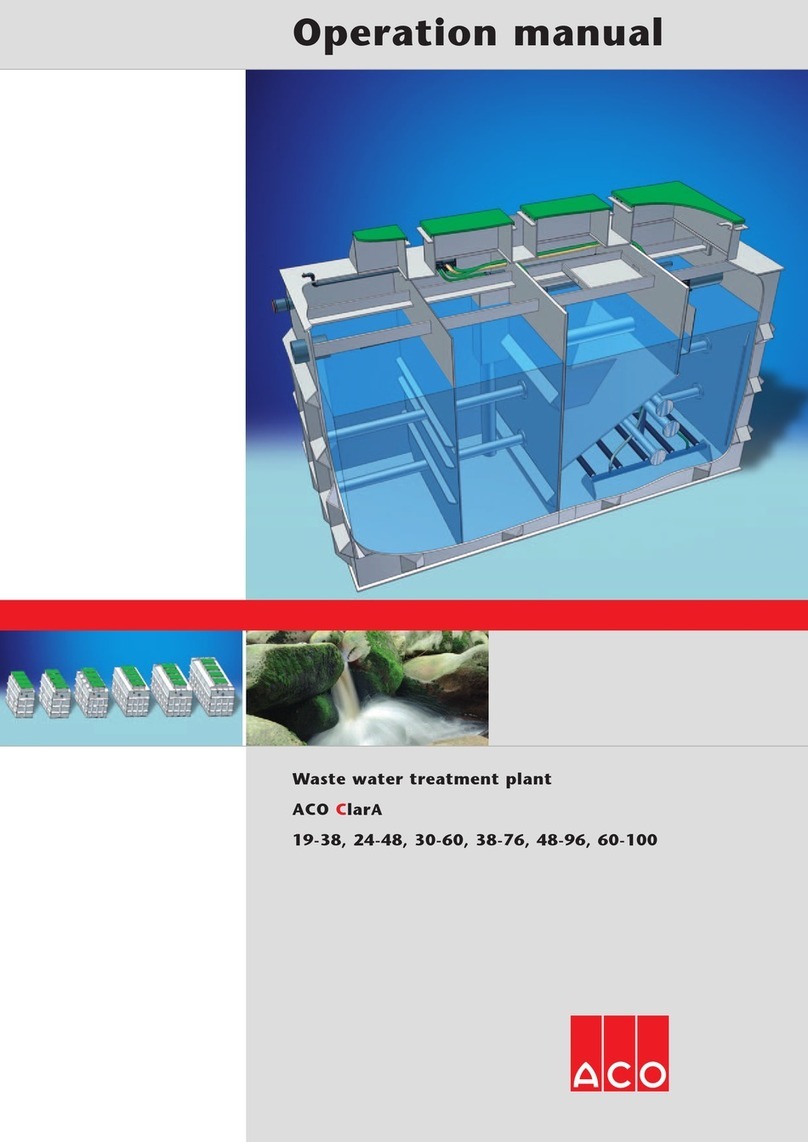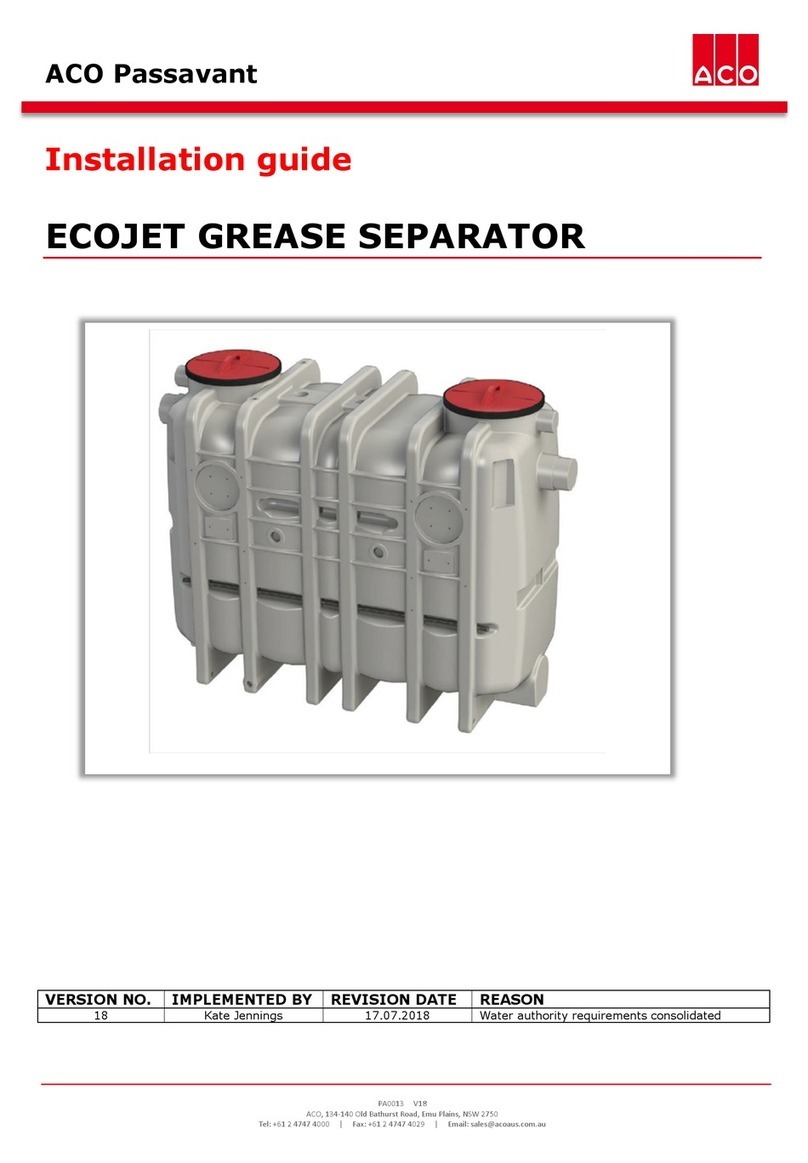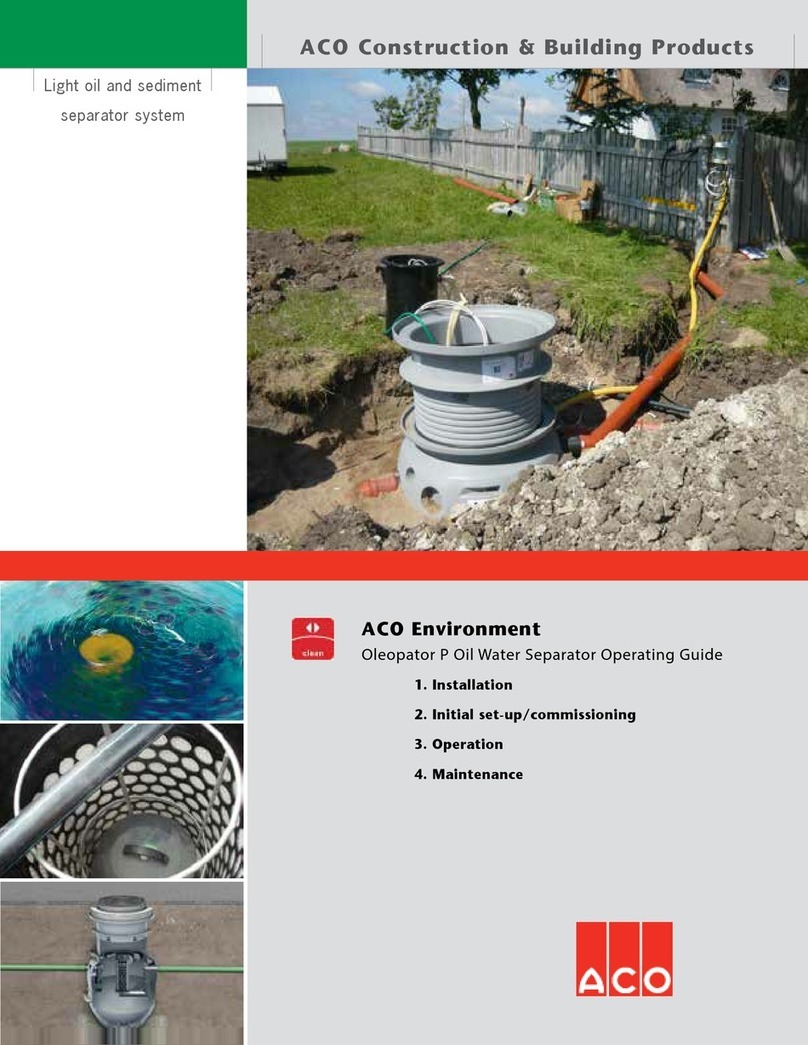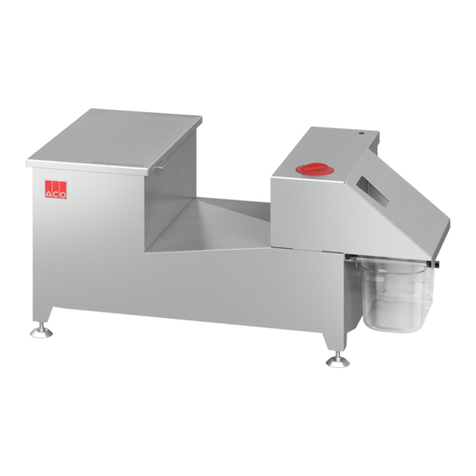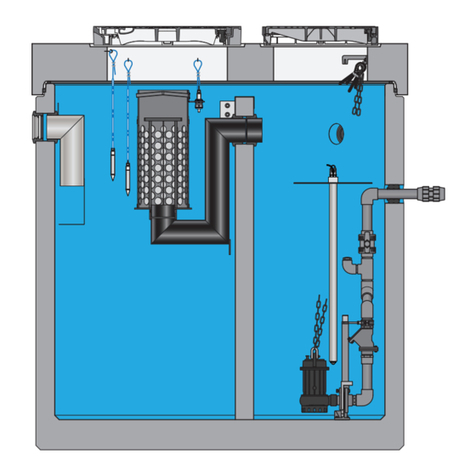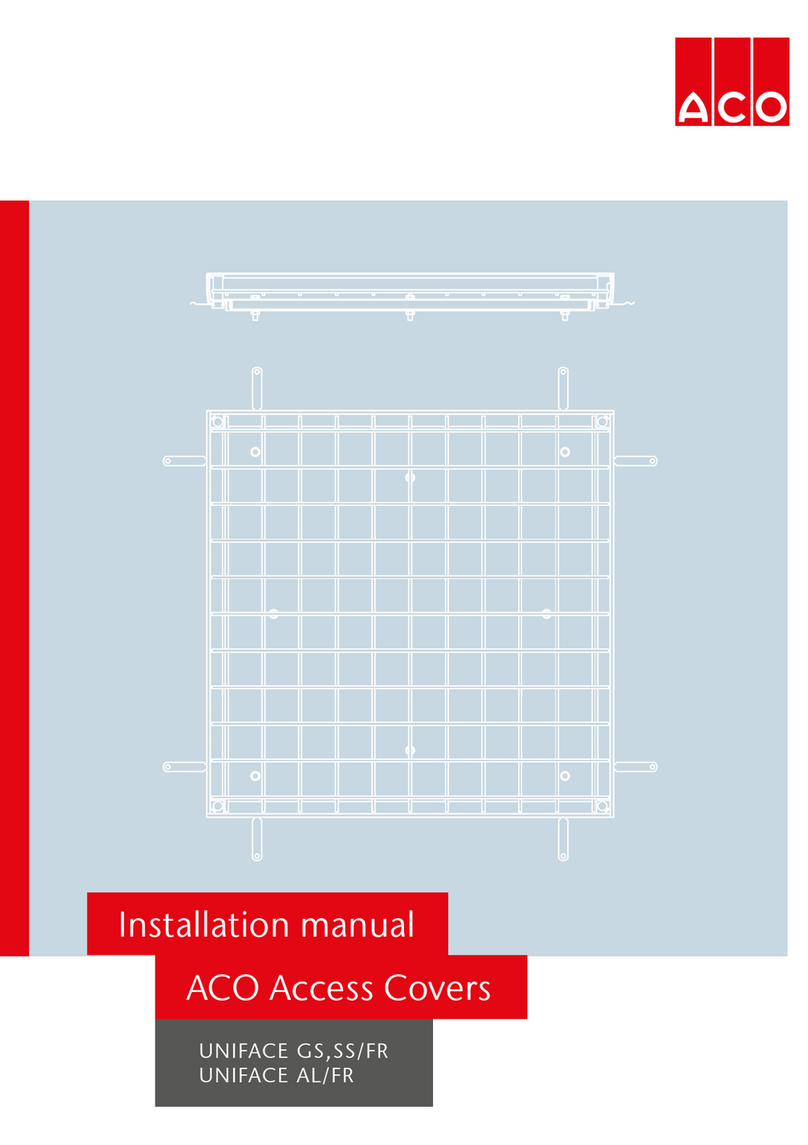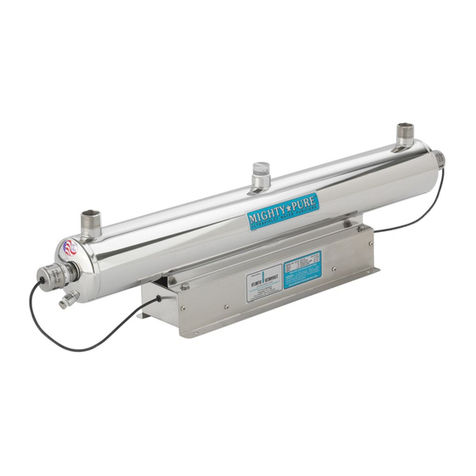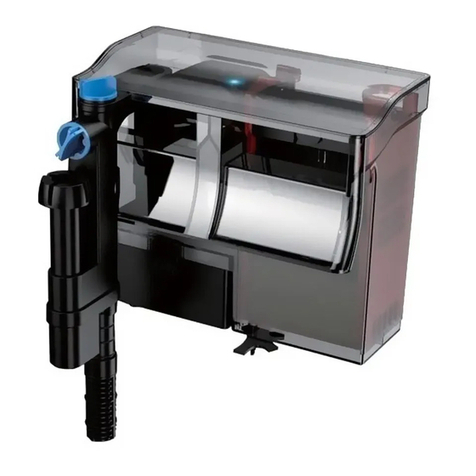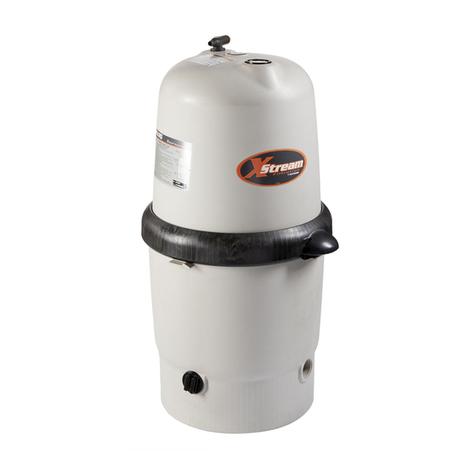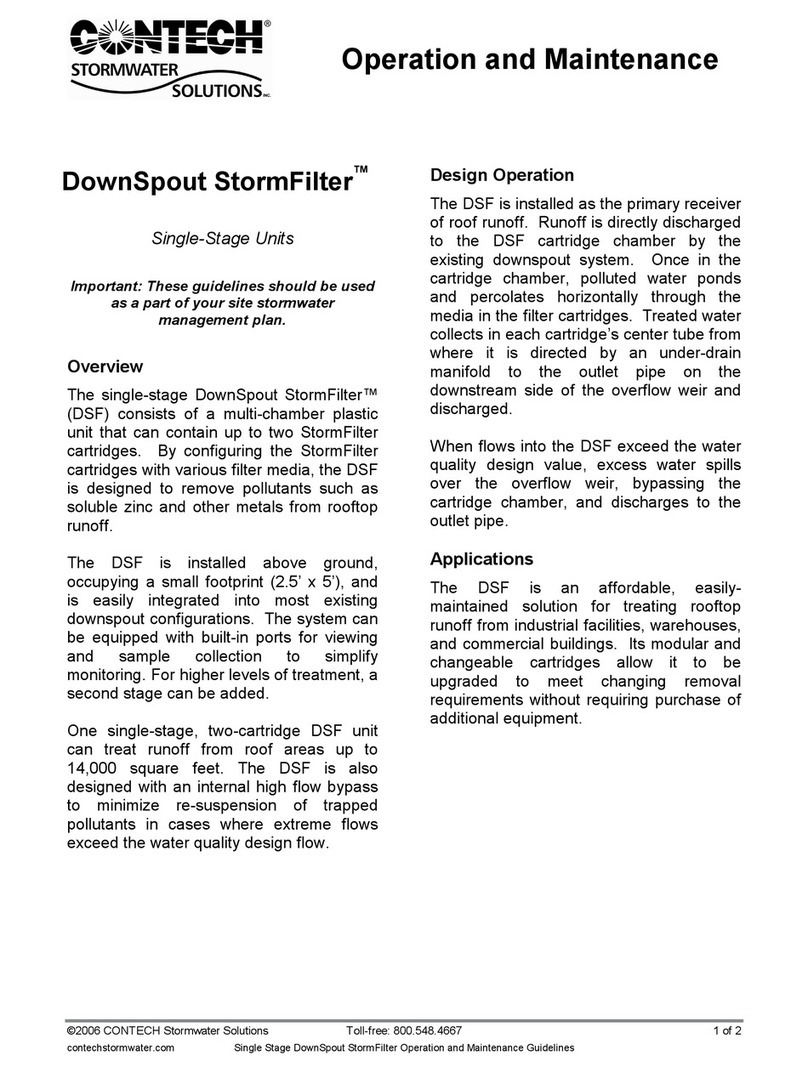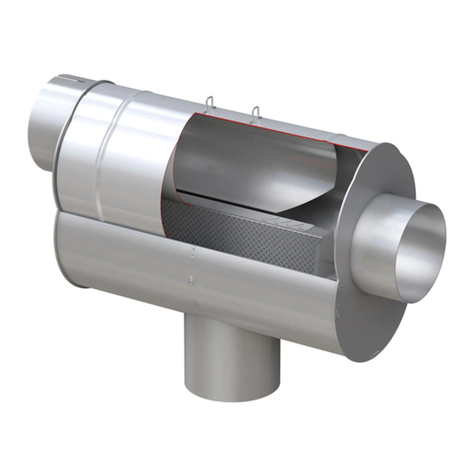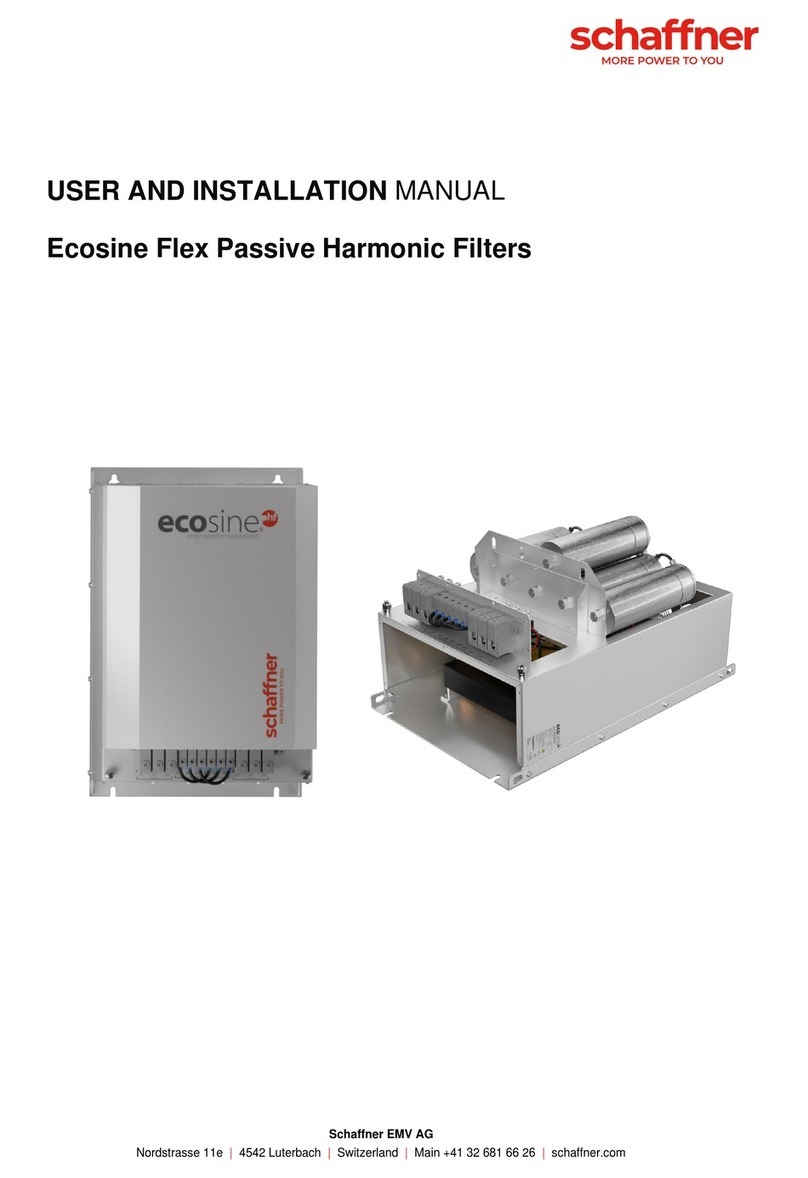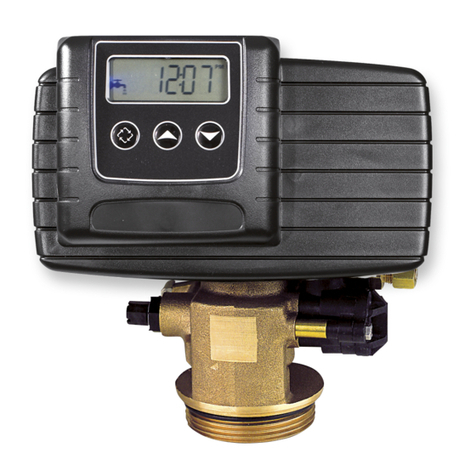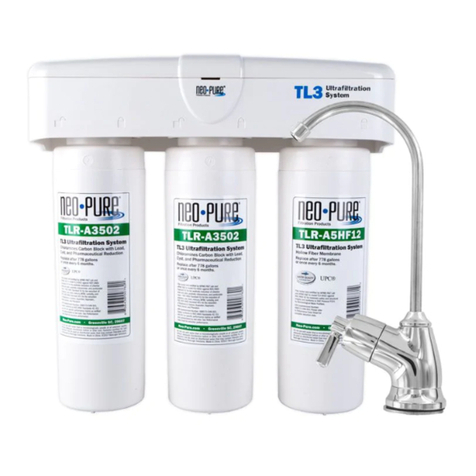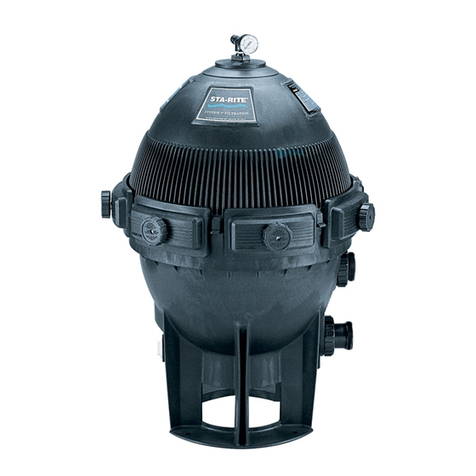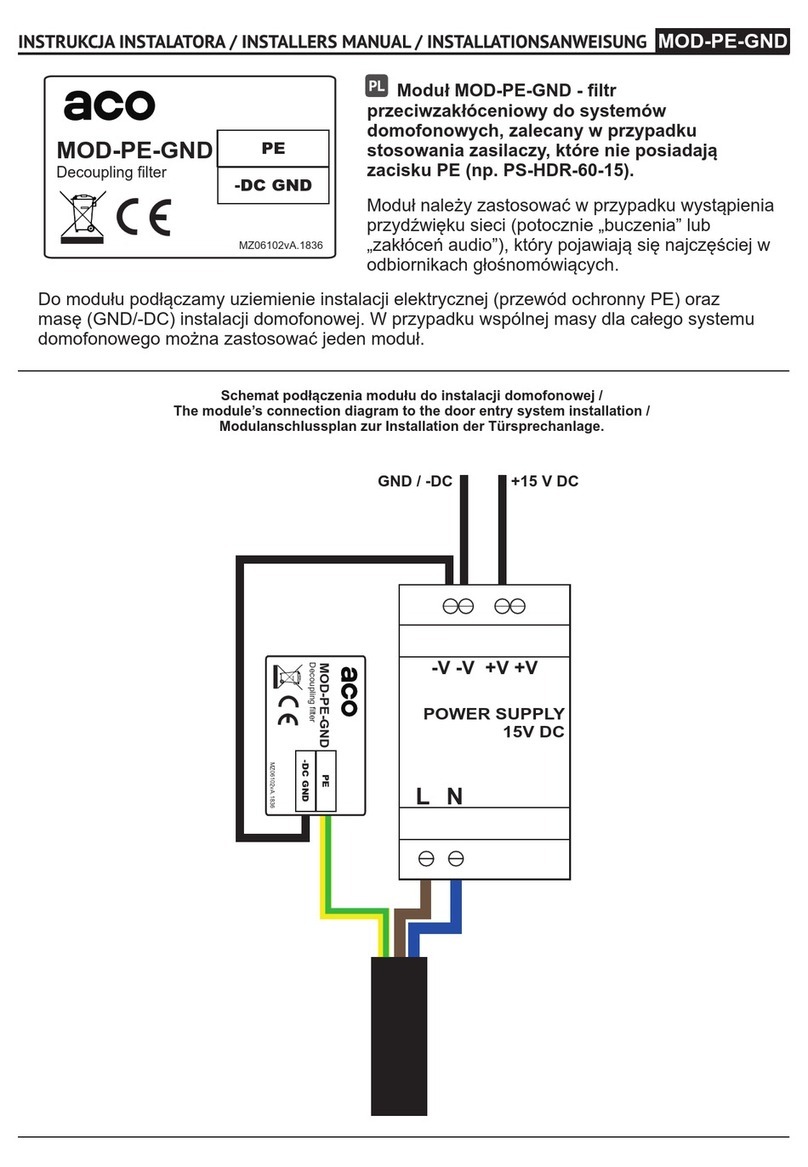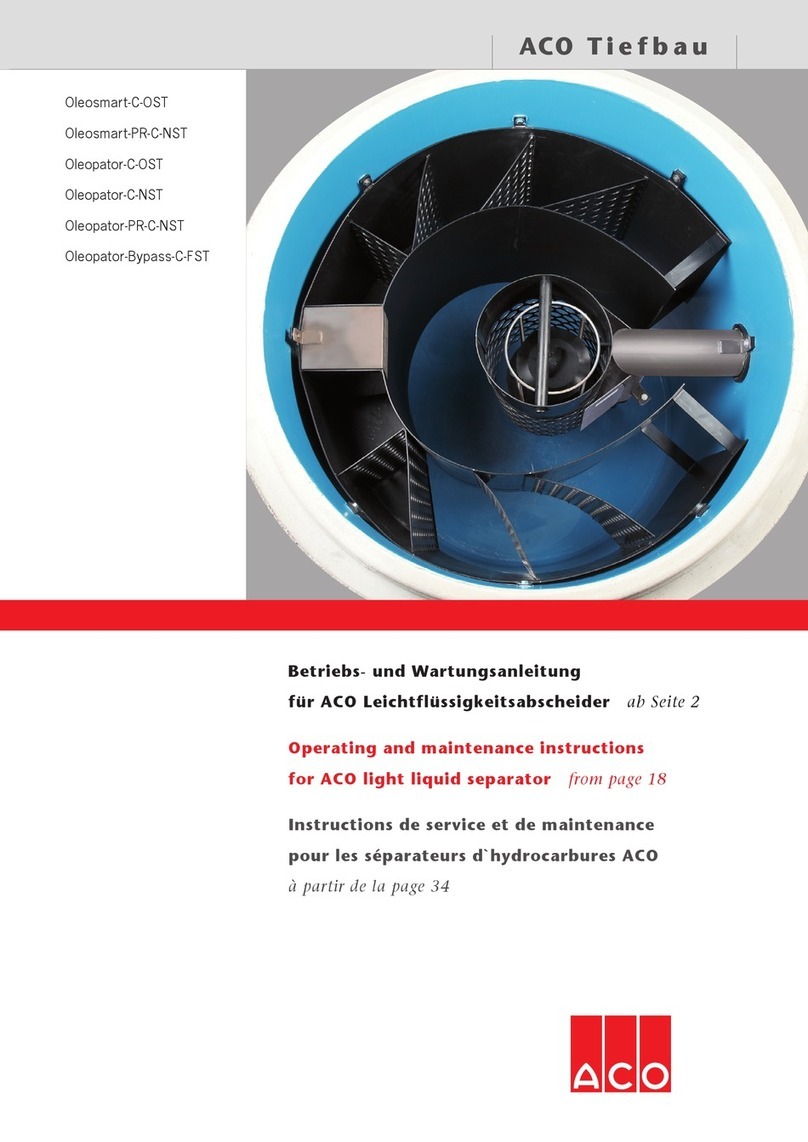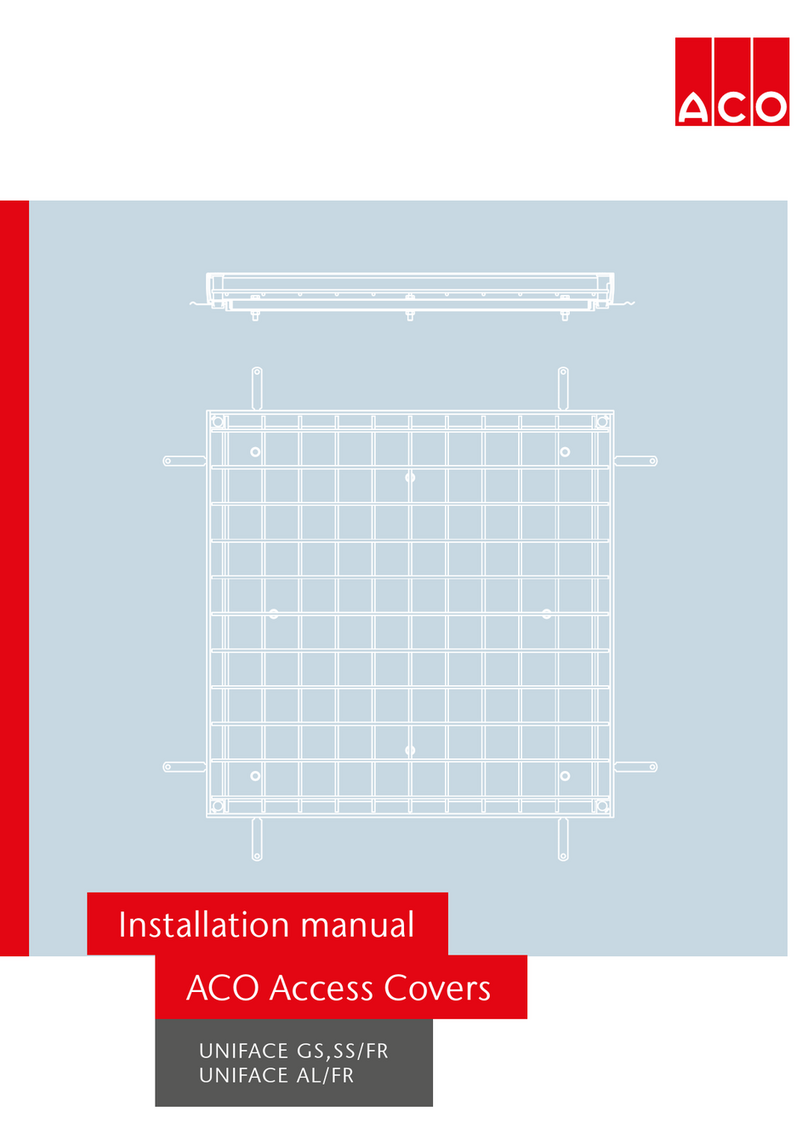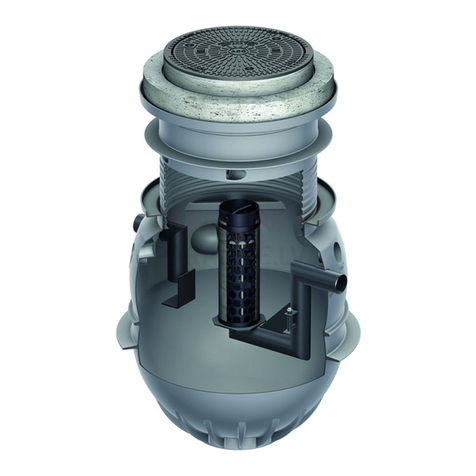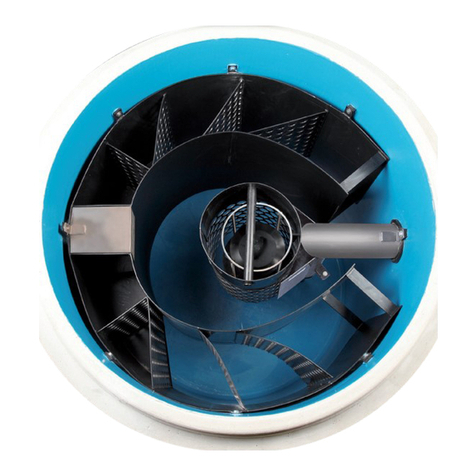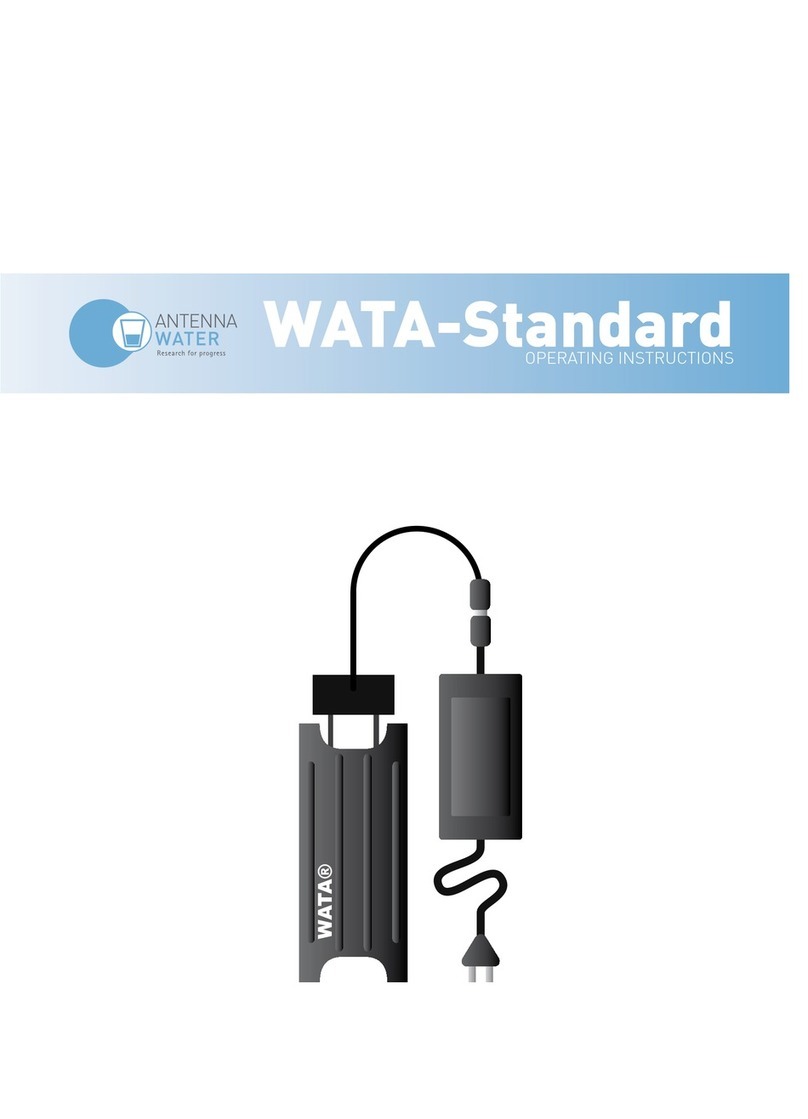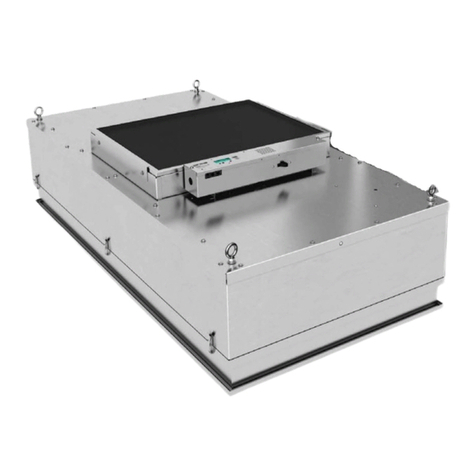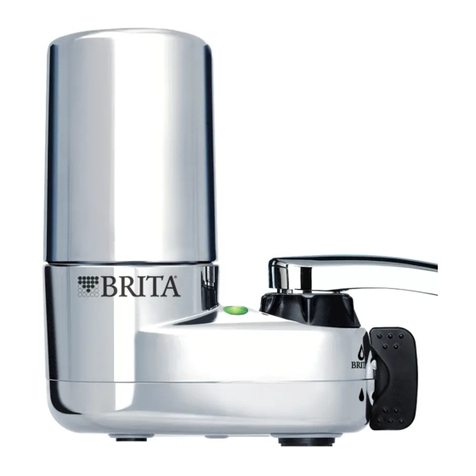
888-490-9552 www.acousa.com
OLEOPATOR P OPERATION MANUAL
ACO ENVIRONMENT
4
1.2 QUALIFICATIONS OF PERSONNEL
All work performed on the separator
equipment is to be carried out by trained
personnel.
1.3 PERSONAL SAFETY EQUIPMENT
Personal safety equipment is necessary
for a variety of works on the separator.
1.4 RESPONSIBILITY OF OWNER
The owner is responsible for complying
with the following points:
Only operate the separator according
to regulations and in proper
conditions.
Ensure that protection devices are
functional.
Adhere to a scheduled maintenance
program and immediately repair
faults. Only repair faults yourself if
the measures are described in these
operating instructions. Contact ACO
for all other measures.
Inspect data plate on the separator for
completeness and legibility.
Adequate personal safety equipment
must be available and used.
Provide complete and legible
operating instructions at the
separator’s site of installation and
training based on this.
Only employ qualied and authorized
personnel.
HEALTH & SAFETY
Safety instructions are intended to
prevent injury to personnel or damage to
equipment and must be read before any
maintenance is performed.
The separated oils and any vapors are
ammable and/or combustible. Care
must be taken whenever the system is
opened.
All safety instruction labels must be
replaced if they become detached or
illegible.
Gas concentrations MUST be tested
before entering the separator;
breathing apparatus is recommended
for all personnel entering separator.
Safety lines, harnesses and radios/
whistles are advised if entering
separator.
Smoking and naked lights are
strictly forbidden anywhere in area
surrounding the system.
Installed devices (e.g. baes, inlet and
outlet parts, coalescence unit, etc.)
are intended for operation of separator
system and are not load bearing.
They must not be used as steps,
footholds or resting places for cleaning
equipment etc.
The separator system is dened as a
Zone 0 Explosion Hazard Area. Only
authorized, properly trained personnel
are permitted to perform work on the
electrical components of the separator
(where used).
Contact with wastewater
containing light liquids—e.g. during
maintenance—can lead to dry, irritated
skin, skin infections, headaches,
dizziness, nausea, vision problems,
loss of consciousness, and—in serious
cases—death. Ensure proper protective
clothing is used and immediately wash
any exposed skin.
